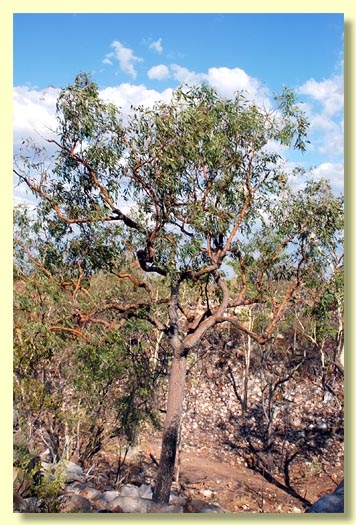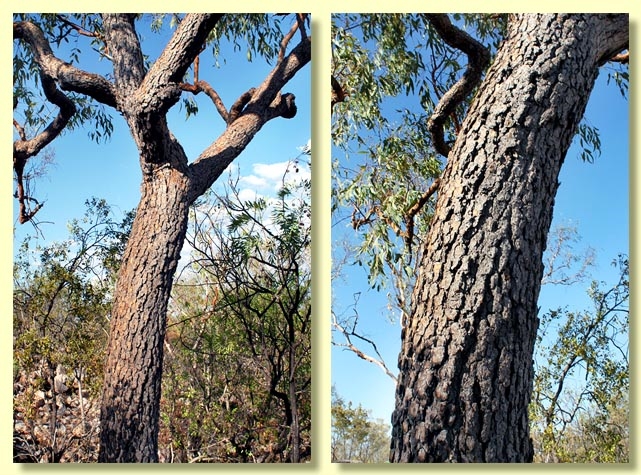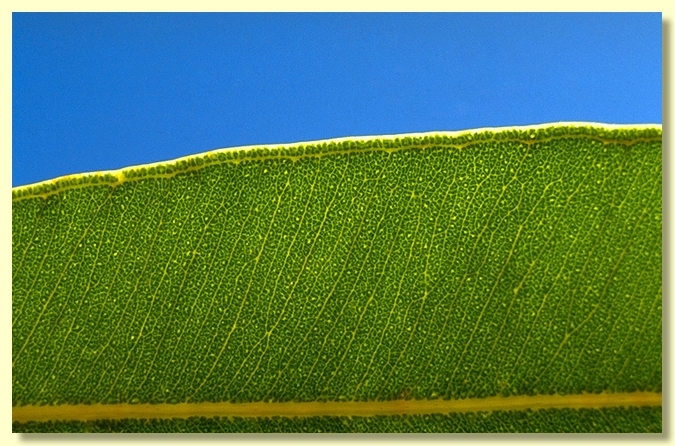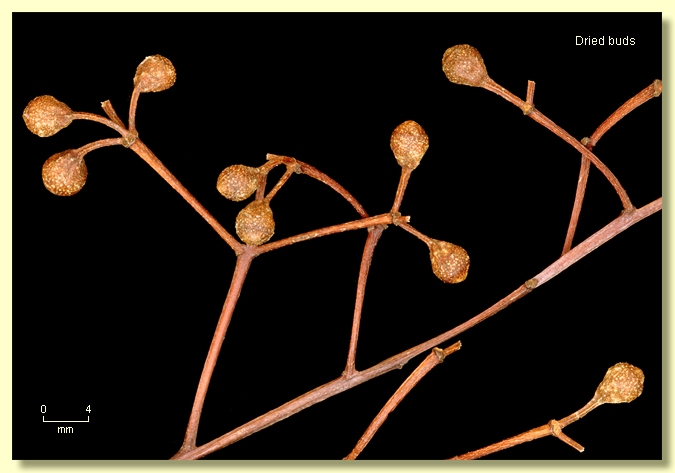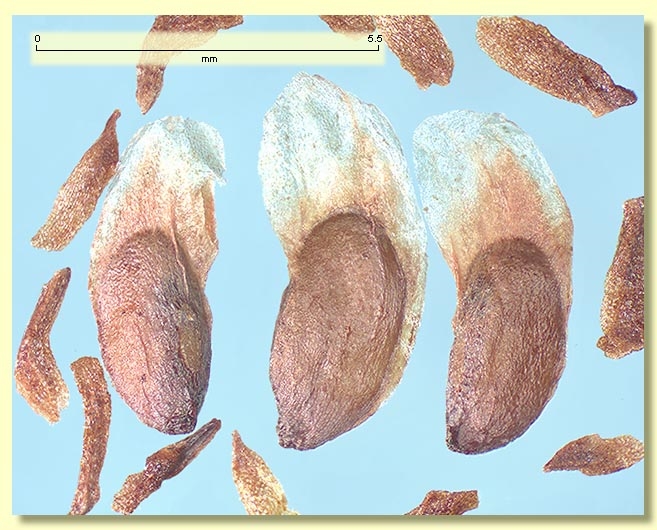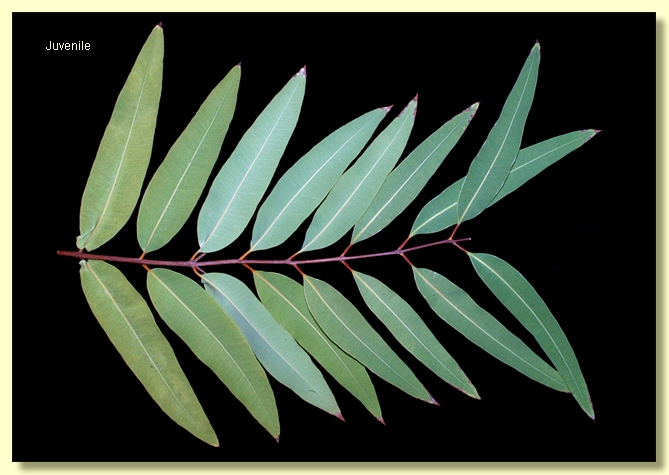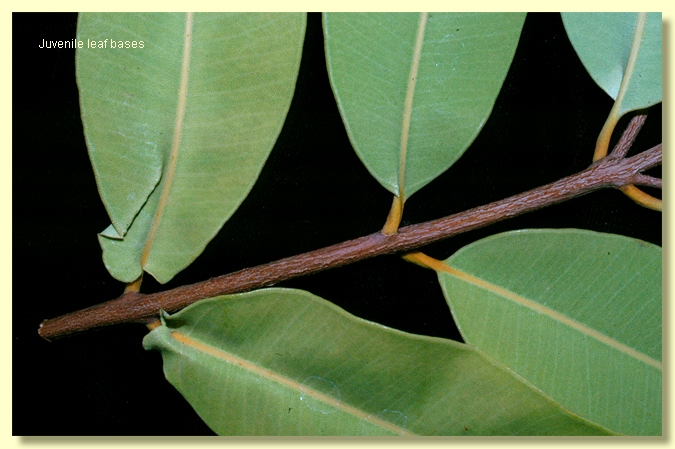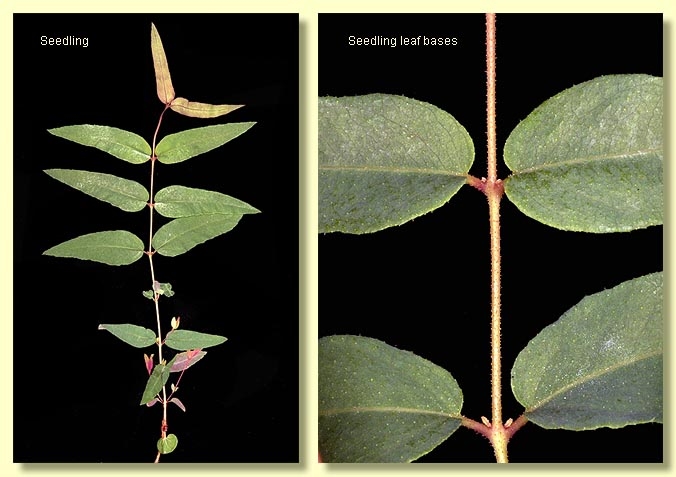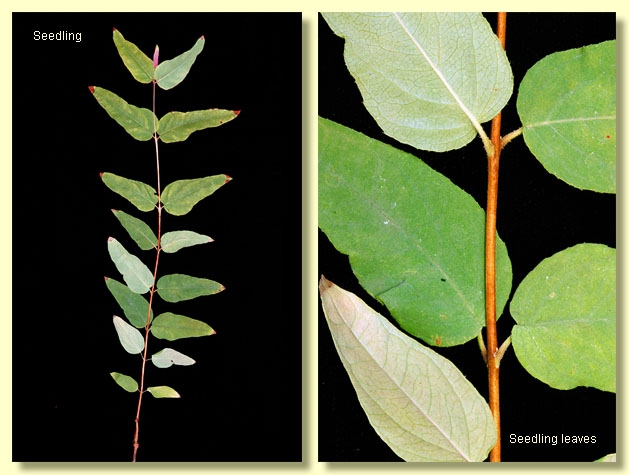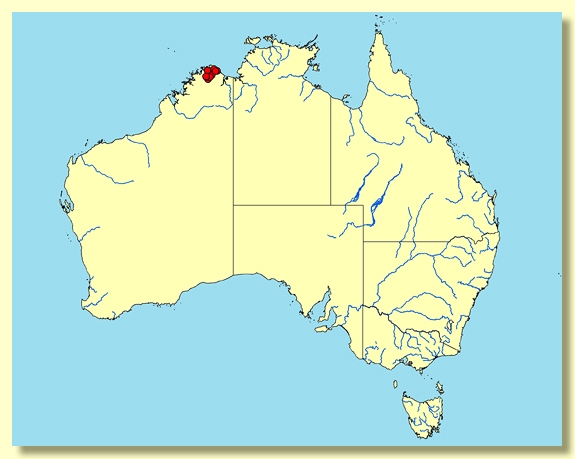Euclid - Online edition
Corymbia arenaria
Corymbia | Rufaria
Tree 7 m tall, often of tumbledown appearance. Forming a lignotuber.
Bark rough and thick, over whole trunk and branches to ca 3 cm diameter, fissured to chunky tessellated to crumbly and flaky, dark brown to grey-brown, reddish brown underneath, any smooth bark white to pale brown-grey.
Branchlets lack oil glands in the pith; smooth, rarely glaucous.
Juvenile growth (coppice or field seedlings to 50 cm): stems rounded in cross-section, setose only on lowest part; leaves sessile at first, slightly setose and with amplexicaul bases at lowest nodes, soon becoming shortly petiolate, remaining opposite for at least 25 nodes, broadly lanceolate, 9–18 cm long, 1.8–4 cm wide, base strongly lobed on lowest leaves, never peltate, becoming rounded then tapering up stem, apex pointed, mid green, glabrous.
Adult leaves alternate, petioles 0.6–2 cm long; blade lanceolate to falcate, 6–16(19) cm long, 0.8–3 cm wide, base tapering to petiole, margin entire, apex pointed, thin-textured, concolorous or slightly discolorous, dull, green to grey-green, side-veins greater than 45° to midrib (penniveined), reticulation dense to very dense, intramarginal vein very close to edge, oil glands intersectional, one per areole, or obscure.
Inflorescence terminal compound, branches sometimes glaucous, peduncles rounded to angular, slender, 0.4–1.4 cm long, buds 7 per umbel, pedicels 0.1–0.6 cm long. Mature buds pyriform to obovoid or ovoid (about 0.4 cm long, 0.3 cm wide), glossy, smooth, scar absent (both opercula shed together at flowering), operculum shallowly rounded to broadly conical, stamens inflexed, all fertile, anthers oblong, dorsifixed, versatile, dehiscing by longitudinal slits, style long and straight, stigma blunt and mop-like, locules 4, the placentae each with a small cluster of ovules, arranged in ± 3 rows. Flowers white.
Fruit pedicellate (pedicels 0.1–0.6 cm long), globular-urceolate with a short or longish neck that is flared slightly at the rim or not flared, the base of fruit flat, 0.8–1.3 cm long, 0.7–1.3 cm wide, smooth, scarcely speckled, disc descending vertically, valves 4, enclosed.
Seeds brown, 5–8 mm long, ellipsoidal with terminal wing, hilum ± ventral.
Cultivated seedlings (measured at ca node 10): cotyledons smallish, reniform; stems rounded in cross-section, prominently setose with bristle-glands for at least 19 nodes; leaves sessile or with petioles to 0.6 cm long, opposite for 19+ nodes, elliptic to oblong becoming ovate-lanceolate, 4–8.7 cm long, 0.9–3.1 cm wide, base amplexicaul to lobed or rounded, distinctly discolorous, darker green above, setose with bristle-glands on underside, and with a carpet of short white simple hairs also present on underside.
Flowering has been recorded in January.
Tumbledown bloodwood tree endemic to the remote northern Kimberley region of Western Australia known from the escarpment above the Mitchell River, on Theda and Carson River stations, in Drysdale River National Park and near Kalumburu, extending east to the Seppelt Range; but it is likely to occur on similar sites in the western Kimberley also. It occurs on dissected sandstone plateaus where it favours escarpments, and on ridges with skeletal soil. Corymbia arenaria has thick tessellated dark brownish rough bark, dull, ± concolorous lanceolate to falcate leaves in the crown, small glossy buds in terminal inflorescences, small globular-urn-shaped fruit to 1.3 cm diameter, and setose seedlings.
Within its natural range and habitat C. arenaria is unlikely to be confused with other bloodwoods because of the characters outlined above. The globular-urceolate fruit and chunky thick rough bark of C. arenaria distinguish it from C. nesophila which has more elongate-urceolate fruit and thinner platy rough bark. The latter is also a taller tree on seasonally wetter, sandy to gravelly sites. Other thickly rough-barked bloodwoods in this area are C. polycarpa, which has very narrowly elongated fruit, and C. ptychocarpa subsp. ptychocarpa with larger and coarsely ribbed fruit, and both these species have scurfy buds whereas C. arenaria has small glossy smooth buds. The rough-barked C. papillosa differs in having its crown only of opposite hairy leaves and small spherical fruit.
MORE ABOUT CORYMBIA
MORE ABOUT RED BLOODWOODS
Corymbia arenaria: Latin arenaria, pertaining to sand, referring to its habitat as described by Western Australian botanist C.A.Gardner, “…always occurring on poor sandy soil among sandstone rocks…”

